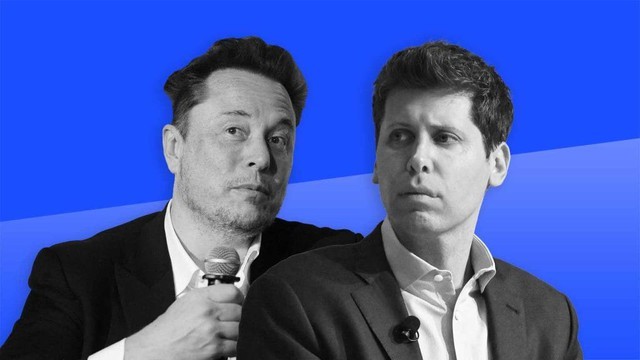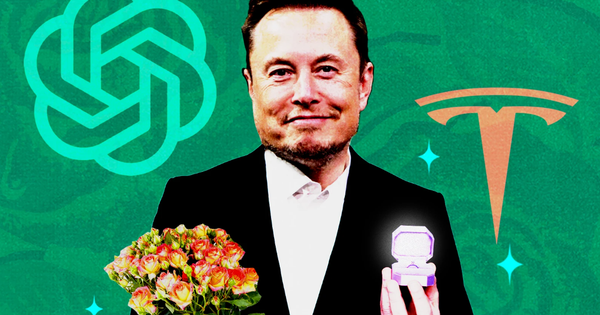OpenAI Investment to Save Desperate Tesla: A Closer Look
By Business Today Financial Expert

In a dramatic turn of events, it has been revealed that Elon Musk’s investment in OpenAI had a hidden motive: to save Tesla from financial ruin. According to Business Insider (BI), leaked conversations between Musk and Sam Altman, co-founder of OpenAI, shed light on Musk’s true intentions when initially approaching the startup.
A Desperate Measure
In 2018, Tesla was on the brink of bankruptcy due to setbacks with its Model 3. This should have been a defining moment for the fledgling electric car startup, but delays and budget overruns left Tesla in desperate need of capital. Musk often portrayed this period as a symbol of the entrepreneurial struggle, but recent evidence from OpenAI tells a different story.
At the time, Musk invested in OpenAI, an emerging artificial intelligence project that eventually created ChatGPT, valued at a staggering $86 billion. Initially, Musk wanted OpenAI to raise $1 billion from investors and then merge with Tesla to secure indirect funding for the struggling electric car company. The revealed conversations show that OpenAI became Musk’s last-ditch effort to save Tesla by selling a new dream to investors and calling for additional funding.
Internal Strife
The internal dispute within OpenAI arose when Musk became angry that the project was being approached by other investors instead of being exclusively reserved for Tesla. OpenAI presented evidence against Musk in the ongoing lawsuit, accusing him of breaching the contract by no longer operating as a non-profit organization. The creator of ChatGPT established a limited-profit division in 2019 to attract new investors and provide salaries for talented employees.
Despite Musk’s claims about the difficulties faced during that period, it is now evident that OpenAI was seen as a promising venture for financial mobilization while providing a new dream for investors. Tesla found itself in dire straits, and Musk saw the potential in OpenAI as a means to raise additional capital.
A Terrible Year
In 2018, while Musk was pushing for the merger of OpenAI and Tesla, the electric car company was in crisis. The production of the Model 3 was burning through excessive costs and falling behind schedule. Even at the all-hands meeting in May 2018, Musk lashed out and criticized an analyst who questioned how much more money Tesla would need to launch the Model 3.
Later that year, Tesla laid off 9% of its workforce as a cost-cutting measure. Elon Musk’s ambitious plan for automating the entire factory proved to be a failure. In August 2018, Musk announced a plan to take Tesla private at $420 per share, seeking additional funding. This was also the time when Tesla reported larger-than-expected losses.
Even after successfully producing the Model 3, Tesla faced difficulties in delivery due to poor logistical capabilities. The delayed deliveries were eating up funds, despite Musk’s relentless cost-cutting efforts. At one point, Musk even required all Tesla employees to personally deliver cars to customers on weekends.
Tesla managed to generate some profits, but it wasn’t enough to alleviate its mounting debt. In 2019, the company experienced a decline in stock prices and saw some executives leave. Elon Musk himself admitted in a private meeting that Tesla would not be profitable in the first half of the year.
The opening of the Shanghai factory in late 2019 provided Tesla with an opportunity to enter the booming Chinese electric car market and reduce costs through efficient production and logistics. Thanks to China, 2020 marked Tesla’s first annual profit.
Unexpected Turns
Despite the fact that Tesla’s survival relied on China, an email sent by Musk to the OpenAI board in December 2018 stated clearly that without him, the project would never have become a reality. Musk believed that OpenAI had a 0% chance of competing with Google’s DeepMind without significant operational and resource allocation changes. He mentioned the need for billions of dollars in annual investments or abandoning the project altogether.
However, OpenAI has thrived, while Musk has not forgotten the project that was once the only lifeline for a desperate Tesla. The lawsuit Musk filed against OpenAI is not about its operations but rather about his frustration that the project emerged as a leader in the exciting field of technology, while Tesla once again found itself in a difficult situation.
Tesla’s stocks experienced a golden period from 2019 to 2023. However, circumstances have changed, and the company now faces increased competition in pricing both in the United States and China. Moreover, Musk is burdened with managing Tesla’s operations and repaying Twitter-X loans, a project that aimed to sell yet another dream to gather funding for Elon Musk but failed.
As AI continues to thrive, Elon Musk finds himself entangled in an unfortunate lawsuit with OpenAI, once again invoking reasons to bring the project back to Tesla.
Source: Business Today

